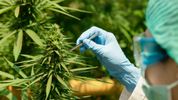Under the SBA's Small Business Debt Relief Program, businesses are provided with financial assistance to help them overcome the challenges created by the COVID-19 pandemic. Specifically, the SBA will pay the principal and interest of current non-disaster SBA loans for the next sixth months, as well as of any new non-disaster SBA loans issued before September 27, 2020. Examples of non-disaster SBA loans are 7(a) loans not issued under the Paycheck Protection Program (PPP), 504 loans, and microloans. To be eligible, businesses must meet the SBA's size standards and must be based in the United States. Additionally, businesses must be able to repay.
A 7(a) loan has a maximum lending amount of $5 million. There are multiple types of 7(a) loans. The general purposes of these loans are to provide small businesses with working capital and to help with the purchase of furniture, supplies, or another business. The loans also may be used to refinance existing business debt.
A 504 loan has a maximum lending amount of $5.5 million and are used in the expansion or modernization of a business (i.e., buying property or machines). Microloans have maximum lending amounts of $50,000 and are used in starting and expanding small businesses and non-profit childcare centers.
Businesses that have applied, or that will apply, for these non-disaster SBA loans may still apply for and receive disaster-related loans, but the Debt Relief Program will not apply to those loans.
"As part of SBA's debt relief efforts, The SBA will automatically pay the principal, interest, and fees of current 7(a), 504, and microloans for a period of six months. The SBA will also automatically pay the principal, interest, and fees of new 7(a), 504, and microloans issued prior to September 27, 2020."
https://www.sba.gov/funding-programs/loans/coronavirus-relief-options/sba-debt-relief
 unknownx500
unknownx500










